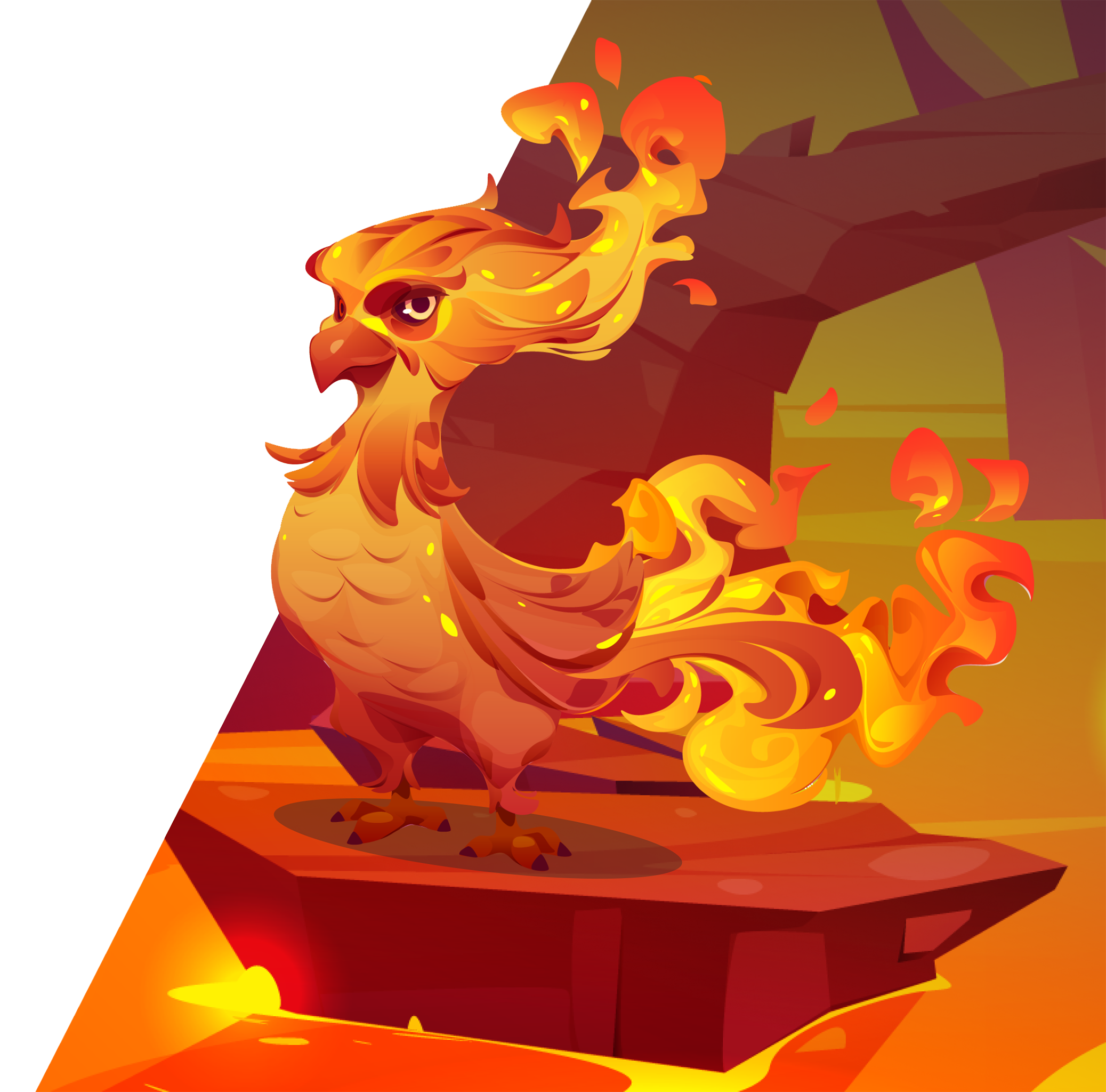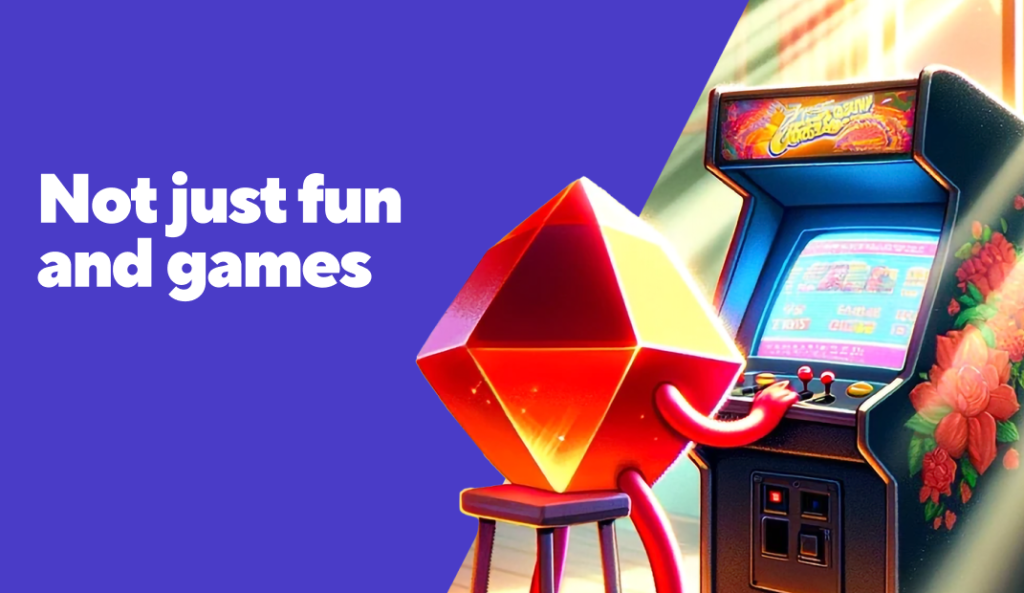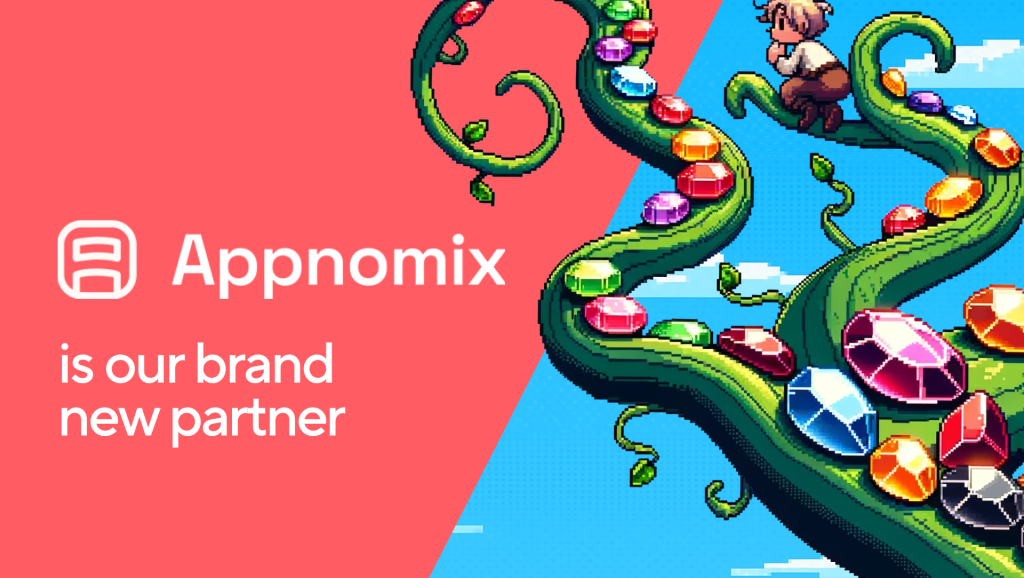Just picture this: You’re scrolling through your favorite mobile app, enjoying the experience, and then suddenly an ad pops up. A similar scenario applies when your users are playing your mobile game and, in between levels, an ad appears. Perhaps they even triggered it themselves to secure an in-game reward.
But how did that ad get there and why are they seeing that specific ad at that specific moment? Now, chances are you’re quite familiar with the concept, considering you found your way to this article. That the ad appears then and there is the magical work of an ad mediation system. This is where behind-the-scenes algorithms work tirelessly to match the right ad with the right user in order to maximize revenue for mobile game developers and publishers, while also enhancing the user experience. Yes, a well-targeted ad can and will help you improve the player experience, especially if you set boundaries, respect the player, and don’t abuse the system.
In this article, we’ll dig deep into the realm of ad mediation, see what’s cooking behind the scenes, and how ad mediation systems work to match up players with the right ads to boost your numbers. Understanding mobile game ad mediation is extremely important if you want to create a win-win-win situation between all involved parties.
What is Ad Mediation?
In mobile games, ad mediation refers to tools that allow game developers and publishers to manage and maximize ad traffic using multiple ad networks. As the name suggests, for ‘mediation’ to be required, you need to be using more than one ad network (such as AdMob, Apple Search Ads, Smaato, TapJoy, Unity, Meta, etc.) Using a single ad network would mean said ad network would be using all ad impressions, regardless of price.
Experienced mobile game marketers use ad mediation because employing a single ad network can become problematic when they don’t have a supply to fill the demand.
Impressions then go unfilled, leaving the mobile game developer with no revenue gain. But what if you had more options? Let’s explore them together.
For instance, picture a scenario in which you have 10 potential buyers for an ad impression. Now you have multiple options and a healthy competition for ad placements in your mobile game. Not only that but now you have increased reach for user bases and better targeting for ads that will pop up in your game. Having ad mediation in place already pays off just by giving you alternatives and results in a high chance of increased revenue.
A simple formula for ad revenue calculation: Ad revenue = Ad requests x fill rate x eCPM
If you’re staying on top of trends and what’s changing in the mobile game marketing world, you may even get a headstart by experimenting with new ad styles, using that knowledge both for testing new ad formats in your games and also for diversifying your user acquisition (UA) efforts. That’s a whole other topic, but we’ve got you covered. You can read our best user acquisition strategies in 2024, and arm yourself with the latest knowledge out there.
What did we learn?
An ad mediation platform serves as a useful layer between a mobile game developer/publisher and multiple ad networks, potentially increasing ad revenue per impression. Ad mediation platforms offer one centralized venue to help you manage multiple ad networks, and streamline reporting and optimization.
How does Ad Mediation work?
Ad mediation platforms simply work through a single SDK to keep everything centralized and streamlined. Without ad mediation platforms, you’d end up having to manage each ad network through its own SDKs and/or dashboards. The sole idea is to help mobile game makers and publishers increase their key performance indicators (KPIs).
To paint a clearer picture, ad mediation platforms create a free-for-all battle arena. Warriors competing in this arena are the ad networks and they want to win the number one prize which is having their ad served to the right person at the right time. Provided
the ad mediation platform creates the perfect circumstances, there will be a high level of competition among the ad networks for their ads to be served, resulting in more competitive eCPMS, and increased ad revenue for the mobile developers.
At the end of the day, there will only be one winner for the super competitive ad placement throne and the winning ad network will shout to the audience: “Are you not entertained?”
Jokes aside, the ad mediation platform will select the best-performing ad network and show its ads to the relevant mobile user. Of course, there are many other factors that come into play, but this is the gist. The ad type, device type, demographics, budget, and many other important elements can be deciding factors when it comes to which ad will be displayed at the end of the day or, well, milliseconds of calculations.
Want us to manage your game?
Let us manage your game to greatness for share of uplift, with no upfront cost. Talk to us today if that sounds like a good fit for you
Types of Ad Mediation and how they work
In terms of ad mediation methods, the waterfall used to be the go-to option for all mobile developers, but there are a couple of alternative methods now and they may be more suitable for your mobile game. Header bidding, which is a more recent and arguably more advanced method, is preferred quite often nowadays.
Alternatively, there’s a rising trend among mobile game marketers to use a hybrid method, which combines some of the best features of waterfall and bidding methods to optimize the ad mediation process and bring out the best result.
Let’s explore how each ad mediation method works in detail and see how these platforms make use of them.
Waterfall Method
A waterfall ad mediation setup is where a mediation platform asks each ad network if they are willing to buy an impression for a specific price. If the ad network does not accept, it moves down the” waterfall” and the process goes on until the offer is accepted by an ad network. Then the waterfall has a winner and ad placement occurs.
Basically, the whole process looks like this, but of course, this is an overly simplified version of what’s going on behind the scenes:
- The user plays your mobile game and when the right trigger happens, the ad mediation platform sends an ad request.
- The ad request first hits the highest-performing ad network per parameters.
- The ad network returns the ad request with a bid response and there’s a match; then the ad mediation platform serves the ad to the player.
A simple visualization may also help:
- Ad network 1 $50
- Ad network 2 $40
- Ad network 3 $30
- Ad network 4 $27
When an ad network accepts the offer, the platform will serve the ad to the player.
As can be seen above, in this approach, the ad mediation platform follows a sequential order and lists ad networks per their potential ad revenue. This is also where the “waterfall” name comes from.
The waterfall method is now seen as “too traditional” by many mobile game marketing experts, and said experts often point out drawbacks such as latency problems and no longer relevant historical data reliance. With waterfall losing popularity, it also means there’s less competition for this method, meaning fewer chances to maximize ad revenue using it. However, specific cases may benefit from being traditional and some ad networks still heavily use this method to meet demands.
Bidding Method
Bidding is essentially an auction whereby the mediation platform asks all ad networks involved how much they’re willing to pay for a specific impression at that moment. The ad networks then answer with offers, and from there the ad mediation platform will pick the highest offer.
This method doesn’t follow a sequential approach but simultaneous and parallel bidding in a real-time auction. The ad mediation platform reaches out to several ad networks at the same time, or more like within a specific time window. This way, there’s high competition for ad serving on your mobile game and chances of increased revenue.
Needless to say, in the bidding method, the highest-paying —and of course, relevant— ad takes the cake and gets served to the player.
Got new, active or legacy games you feel are underperforming?
Let us manage your game to greatness for share of uplift, with no upfront cost. Talk to us today if that sounds like a good fit for you
Hybrid Method
In the hybrid bidding process, the ad mediation platform brings together the traditional waterfall approach with real-time bidding. This means the ad mediation platform analyzes the available ad inventory and decides which ad networks or demand sources to give priority to based on various factors such as historical performance, effective cost per mille (eCPM), and fill rates.
It then chooses the most appropriate ad network or demand source from its ad network partners to fill the ad slot. The selected ad network returns an ad creative, which is then served to the user within your mobile game, and voila!
Regardless of the ad mediation method choice, these platforms monitor the performance of different ad networks at any given time and adjust their priorities in real time through powerful algorithms to generate the maximum revenue and value for all parties involved.
A lot of A/B testing, endless performance analytics, and many up-and-coming optimization techniques are in play here to get the best results and stay ahead of the competition.
Waterfall vs Bidding Mediation
Now this is a heated discussion among mobile ad specialists. You’ll find dedicated defenders on each end of the spectrum, but there is no one true answer. You should have a diverse approach, test what works for your case, and go with the best results, provided you’re not in a pickle and can afford to test. Spoiler alert though, nowadays, most modern mobile companies go for both, meaning the hybrid ad mediation method is on the rise big time.
Both types of ad mediation increase competition for ad impressions, therefore increasing revenue for your mobile game. Why? Because the ad mediation platforms’ main goal is to maximize the revenue of each ad impression to the ad network. While the waterfall method has been gradually supplanted by newer approaches, it still can bump up the competition and have its specific use cases.
The difference between waterfall and bidding mediation is the time it takes a waterfall setup to make multiple ‘calls’ back and forth between mediation platforms and ad networks.
Bidding is faster because every ad network is asked at the same time, which generates higher eCPMs. We are talking minute differences in the tens or hundreds of milliseconds, but this greatly impacts the fill rate, especially if the waterfall is too long.
From the perspective of a game developer, the key difference is that bidding happens automatically, whereas the waterfall must be managed manually to maximize eCPMs and revenue.
According to most experts, the world is heading towards ‘bidding only’ but we are not quite there yet, because not every ad network supports bidding with every mediation platform and there are many issues to overcome or get in sync with. Therefore, the mobile gaming industry often uses a hybrid mediation setup, where both waterfall and bidding methods are used simultaneously, and the impression is won by the best offer from both.
What can good Ad Mediation achieve?
The main result of a good ad mediation setup is high competition between each ad. A higher competition will result in:
- Increased fill rate: Using just one ad network usually means some segments or regions are not well served, such as Asia or LATAM. With more ad networks, the inventory (supply) is increased, resulting in the fill rate increasing to as close to 100% as possible.
- Increased Revenue: A bit obvious, especially if you’ve come this far reading. Ad mediation optimizes ad serving by selecting the highest-paying ad from multiple demand sources. The better and the higher the competition, the more revenue you pocket.
- Higher eCPM: Ad networks need to compete for impressions, and therefore will pay more resulting in a better eCPM.
- Ad revenue growth: Due to the increased fill rate and eCPM.
- Premium Advertisers: Your choice of ad mediation platform can introduce you to new and more beneficial partnerships. These platforms often partner up with select ad networks and offer different terms, revenue share, or special features. Especially if you’re a regular.
‘Good’ ad mediation platforms make monetization easy to manage and present you with dashboards that bring you data clarity and highlight further monetization improvements. The core idea here is to create a sustainable, and thriving digital ecosystem for all involved parties, whether you’re on the side as a mobile game developer, publisher, ad network, or platform owner.
Want us to manage your game?
Let us manage your game to greatness for share of uplift, with no upfront cost. Talk to us today if that sounds like a good fit for you
How to select a suitable Ad Mediation platform
The mobile ad tech industry is constantly evolving and we’ve seen tremendous changes in recent years. Being up-to-date is essential, that part didn’t change at least.
Selecting a suitable ad mediation platform is crucial for maximizing ad revenue and ensuring a seamless advertising experience for both publishers and users. Here are some key factors to consider when evaluating ad mediation platforms:
How do you find the right ad mediation partner when everything changes so rapidly? Especially when maximizing your ad revenue is directly related to your choice of ad mediation platform. The ad experience you provide has to be seamless, flawless, and error-free. Even a simple, non-intrusive ad can be annoying for a mobile gamer. Now imagine the ad mediation platform or the network fails to serve the right ad, or even worse, a bugged ad. The level of annoyance just doubled or tripled even.
Ads are almost always seen as part of a mobile game now (with certain exceptions), but a no-show ad that you can’t even turn off can be both immersion-breaking and extremely hurtful for your retention metrics.
Therefore, when selecting an ad mediation platform, SuperScale recommends comparing these main parameters:
- Integration and Compatibility: This is by far the most important factor you should keep in mind. No matter how good of a match the ad mediation platform is on paper, you have to make sure this platform supports integration with the framework you are using for your mobile game.
- Being User Friendly: The platform should be easy to use so that your routine tasks are quick and easily accessible. It shouldn’t take long for you to feel native using the platform and onboarding new team members shouldn’t become a hassle. The best ad mediation platforms often come with detailed documentation and video guides nowadays.
- Reporting and Data-Driven Analyses: Having the ability to dig deep into data, transform said data into actionable insights, and understand what is happening may help you further increase your monetization and potential revenue.
- Selection of Ad Networks: All major ad networks should be integrated: Meta, AdMob, Applovin, Fyber, ironSource, Unity, and many others. The list used to be a lot shorter just a few years ago, but now you have more options than ever. Making the selection process a bit more complicated, but these are good options and new ad placement venues are becoming popular.
- Features: This is determined by what you need and plan to use, for example, A/B testing, iOS ID split, cross-promotion, or direct deals. You know what you need the best. Don’t be fooled by generic marketing terms or CTAs. Dig deep and understand what features can improve your process.
- Ad Formats and Targeting: A flexible and diverse approach can take your earnings to new heights. Consider the variety of ad formats and targeting options supported by the ad mediation platform and how they fit into your game design and loop.
Naturally, developers tend to end up comparing ad mediation platforms. Here are some of the most popular ones in 2024:
- AdMob
- AppLovin
- ironSource
- Appodeal
- Inmobi
- Smaato
- Chartboost
- PubMatic
There are also challenger brands emerging in gaming such as X3M. Each ad mediation platform offers some advanced features that may be interesting for small-to-medium-sized, or bigger games. Needless to say, they all come with pros and cons, but sadly, we can’t make the right choice for your game here. Each mobile game is unique and can benefit from the different features these mediation platforms offer.
However…
How SuperScale can help with ad mediation
We love to see games grow. Ad monetization sounds tricky but is often the “low-hanging fruit” with quick implementation, measurable uplift, and substantial results. Again, check out our eBook here! Our Game Management services can help you with ad mediation setup and maintenance as well as optimization and personalization of ad placements.
You can see some of the results we have delivered to our partners by checking out our case studies. Or, if you’d like to get in touch, click here for a 15-minute qualification call.





